When the Mustang II arrived for the 1974 model year, the tri-bar fender badge was reworked to a Roman numeral II and the horse was re-sculpted with its head more upright and a straighter tail. (Courtesy of Ford Motor Company)
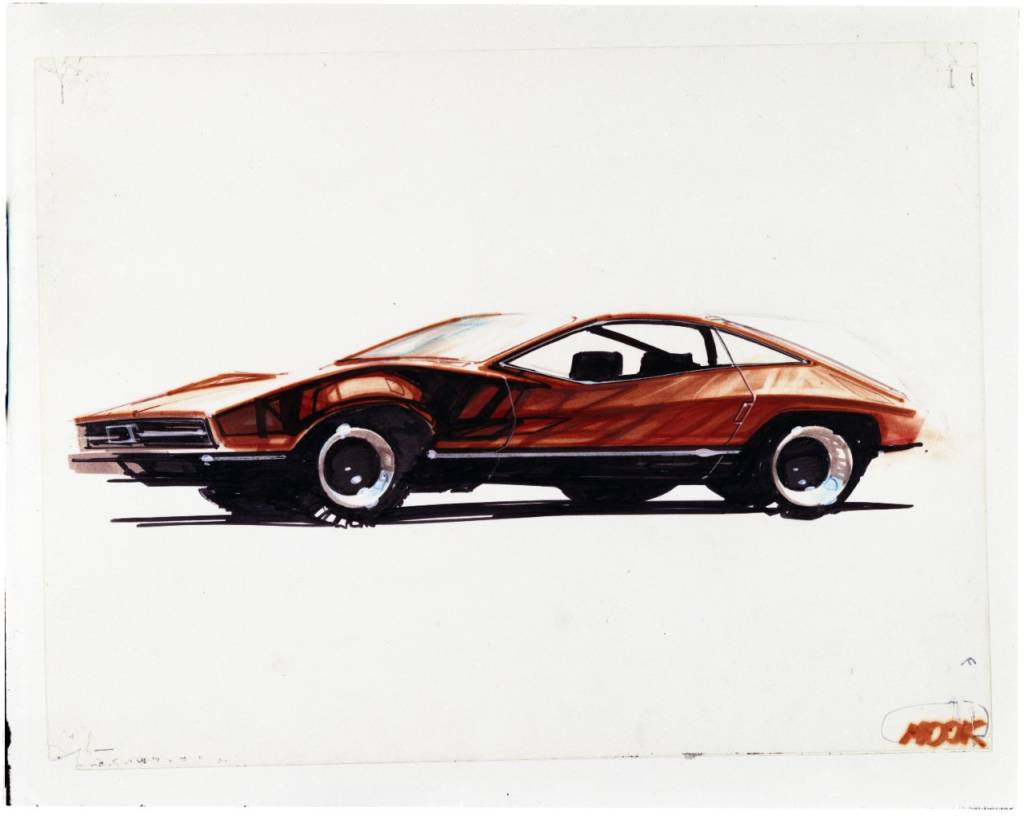
Another sketch that combines a slimmer version of the shark-nose grille with hidden headlamps. The shape of the side glass has evolved to a shape closer to what would roll off the assembly line in 1973. (Courtesy of Ford Motor Company)
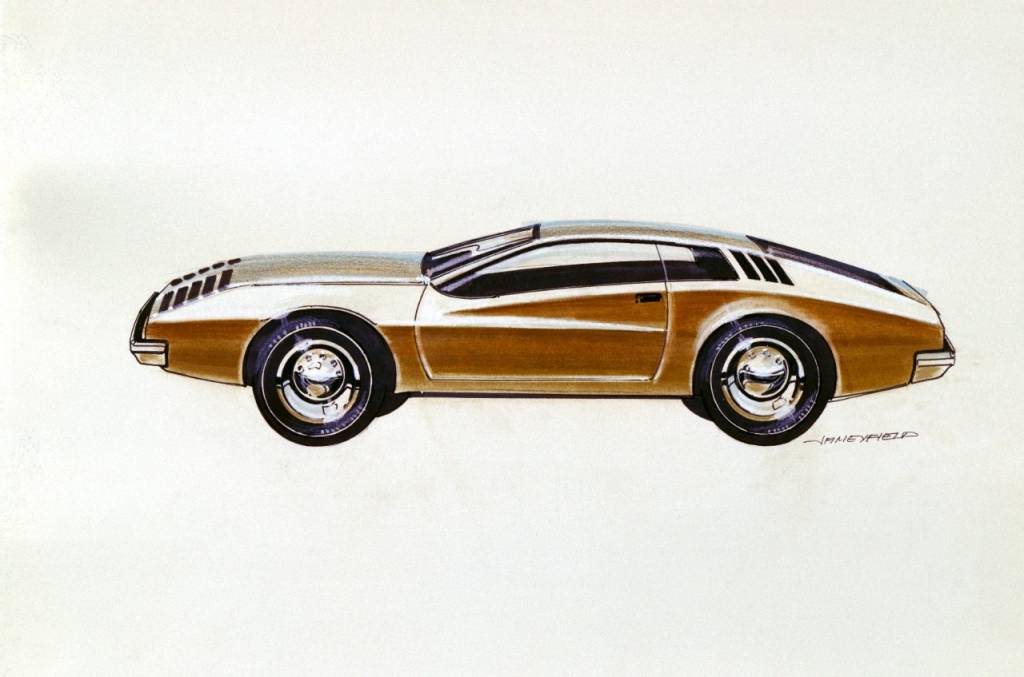
This sketch takes a more radical approach to the hatchback layout on the shorter-wheelbase platform. (Image courtesy of Ford Motor Company)
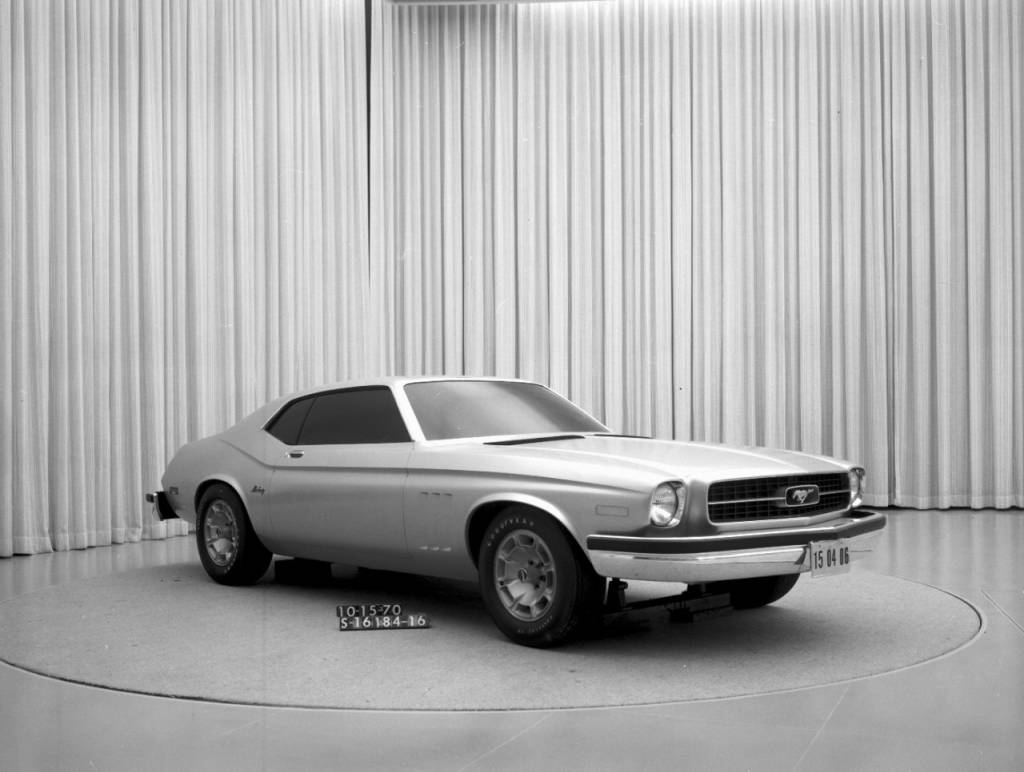
This model was also built on the larger platform, but the front end gives the first hint of what the production car would look like with shrouded headlights separated from the grille. (Image courtesy of Ford Motor Company)
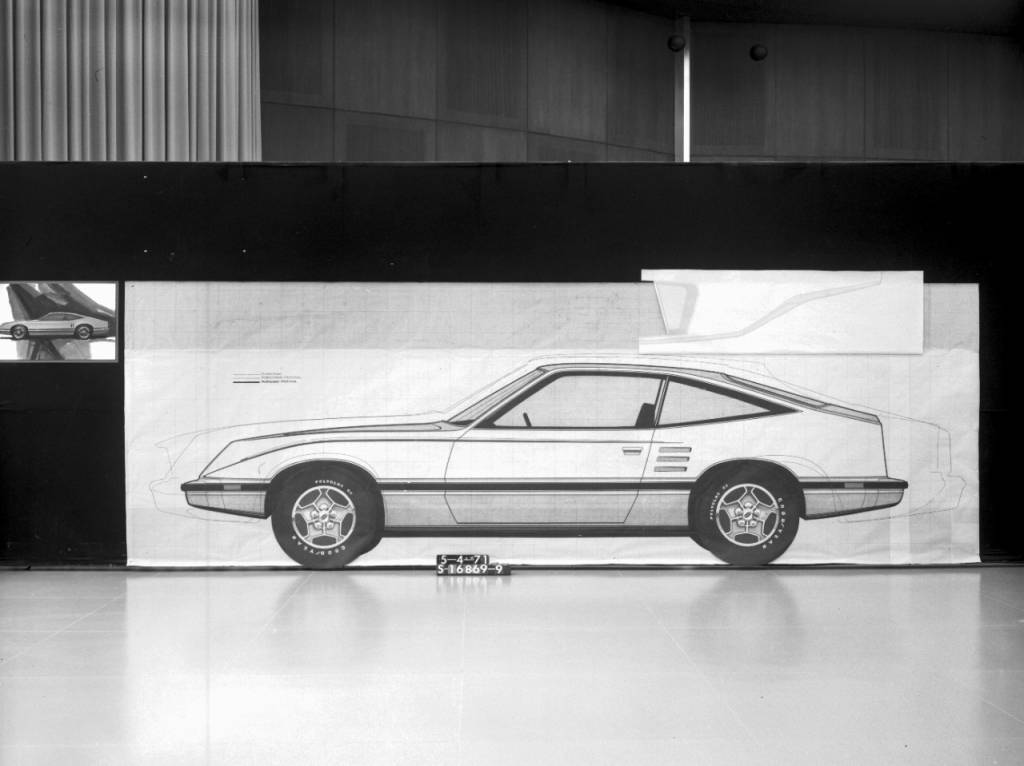
This tape drawing shows the dramatic reduction in size from the 1973 Mustang, and one of the early proposals for the 1974 model. (Courtesy of Ford Motor Company)
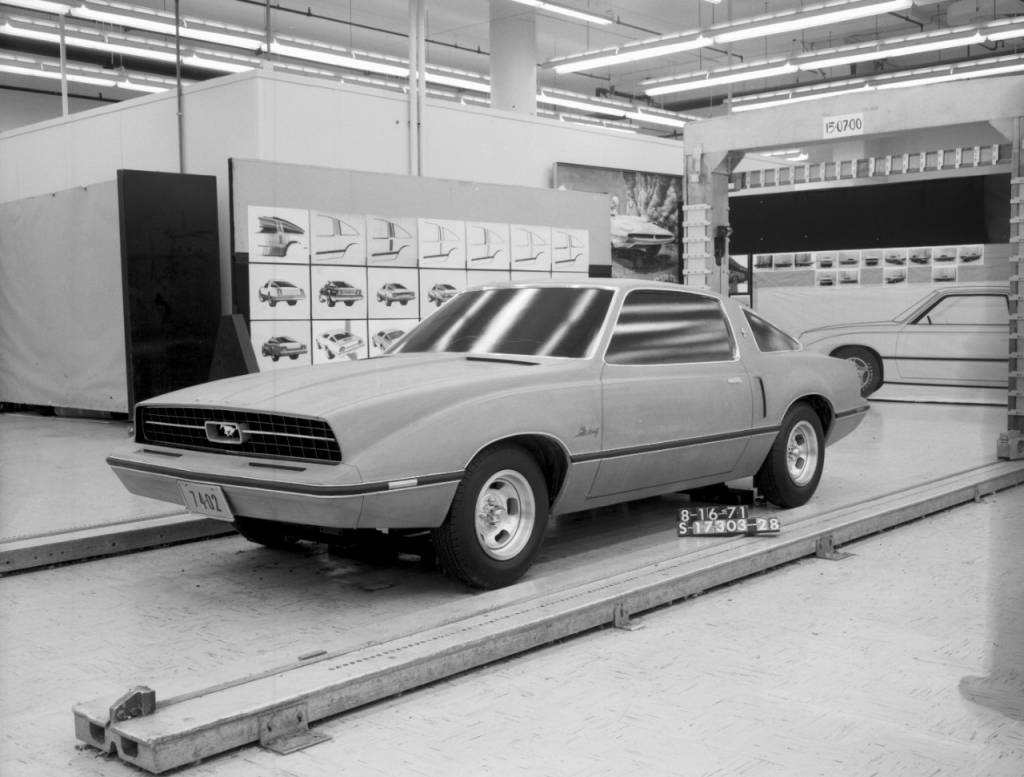
This model takes the basic profile of the Ghia hatchback and adds a forward-leaning “shark-nose” grille while retaining hidden headlamps. (Courtesy of Ford Motor Company)
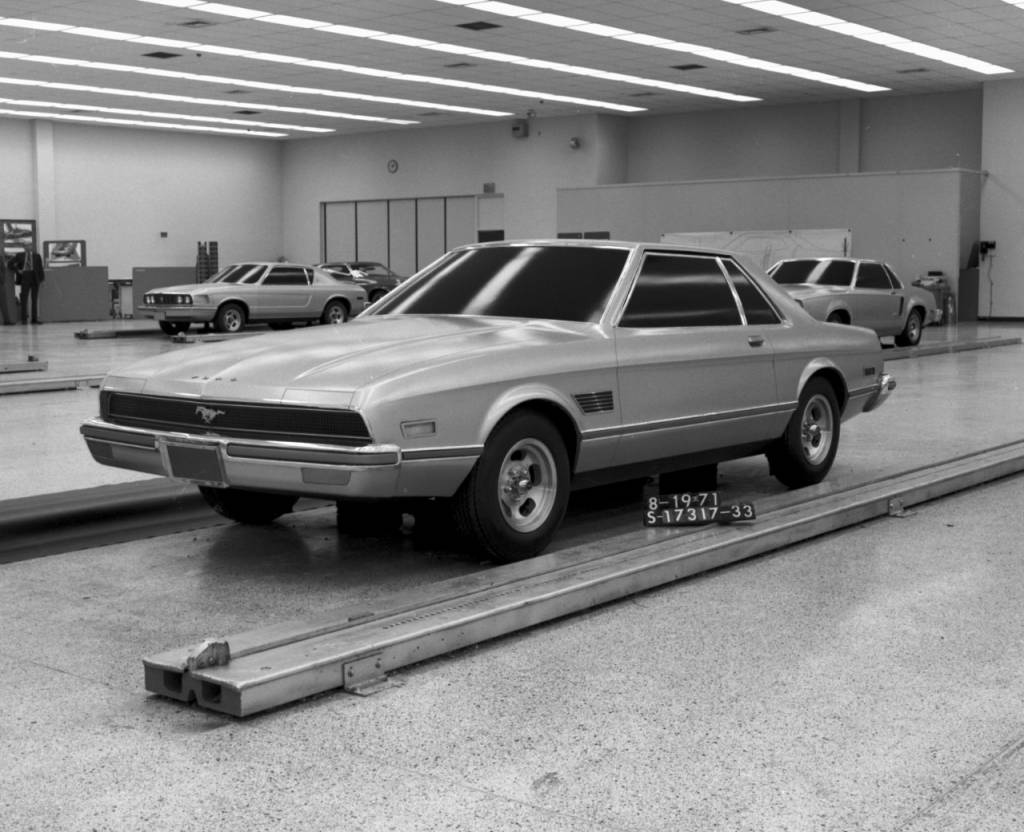
By early 1971, the decision was made to shift to a smaller, lighter platform, but this design proposal was deemed too conservative and formal for a Mustang. (Courtesy of Ford Motor Company)
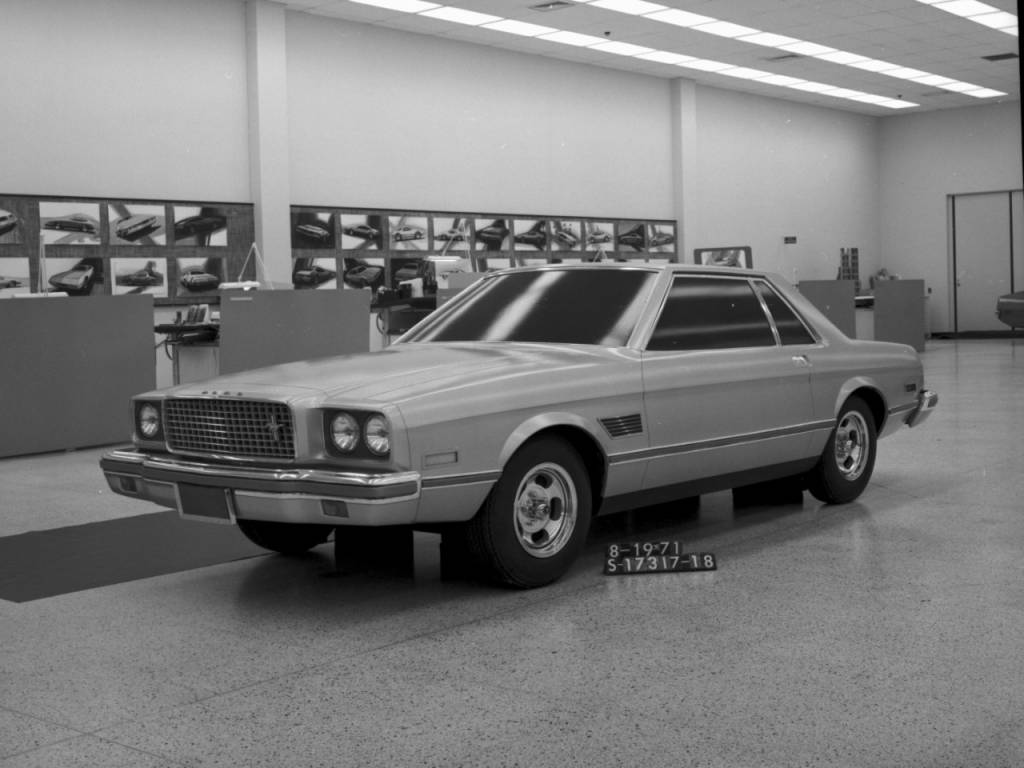
This model took the conservative design theme even further with an upright grille, quad headlamps and none of the fun spirit of Mustang. (Image courtesy of Ford Motor Company)
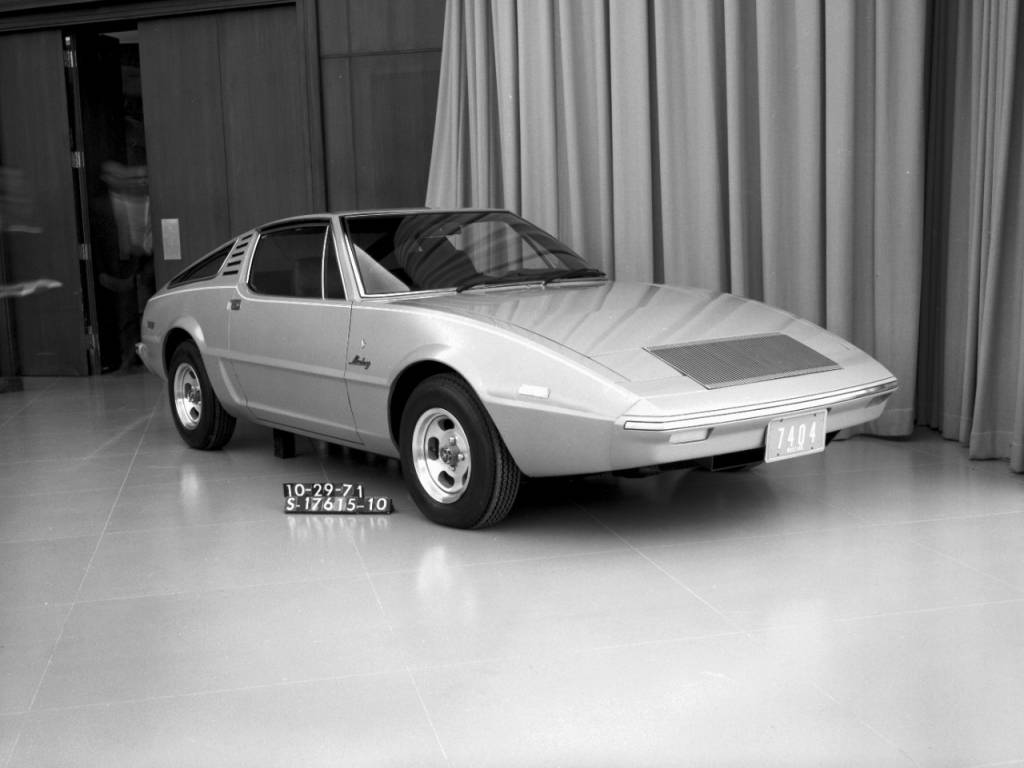
In mid-1971, the Ford-owned Ghia design studio in Italy was asked to prepare two proposals for a fastback and a hardtop. This three-door hatchback led the way to a sleeker-looking theme for Mustang II including the molded-in faux side scoops, one of the few details that actually survived for production. (Courtesy of the Ford Motor Company)
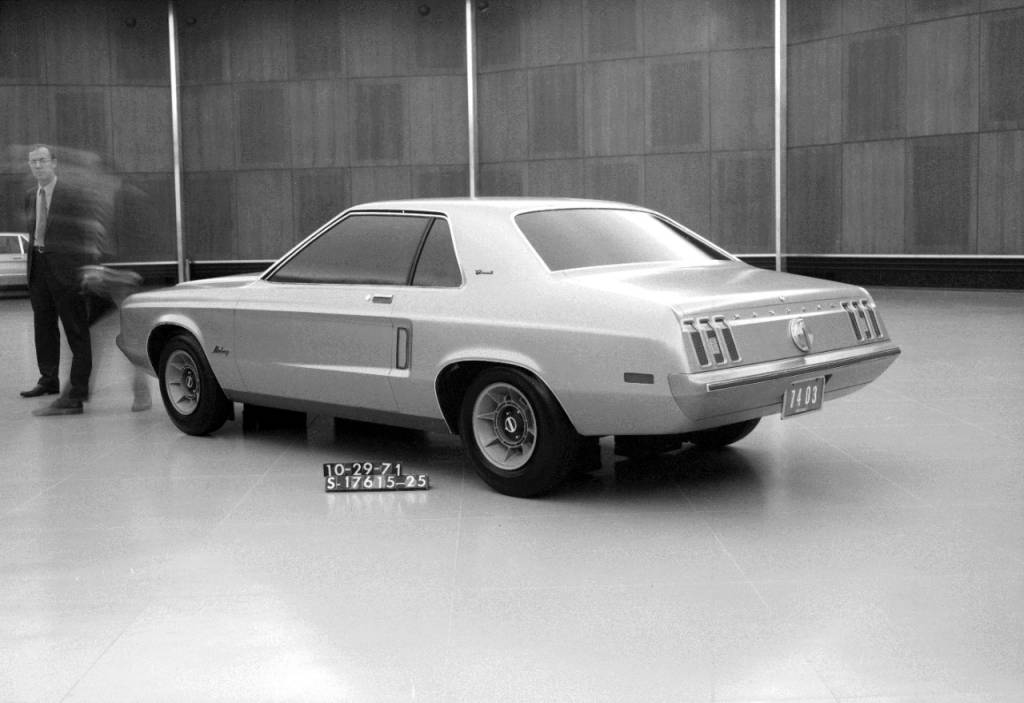
This hardtop proposal further develops the theme from Ghia’s hardtop design, and provides a more contemporary interpretation of the original 1965 hardtop. (Courtesy of Ford Motor Company)
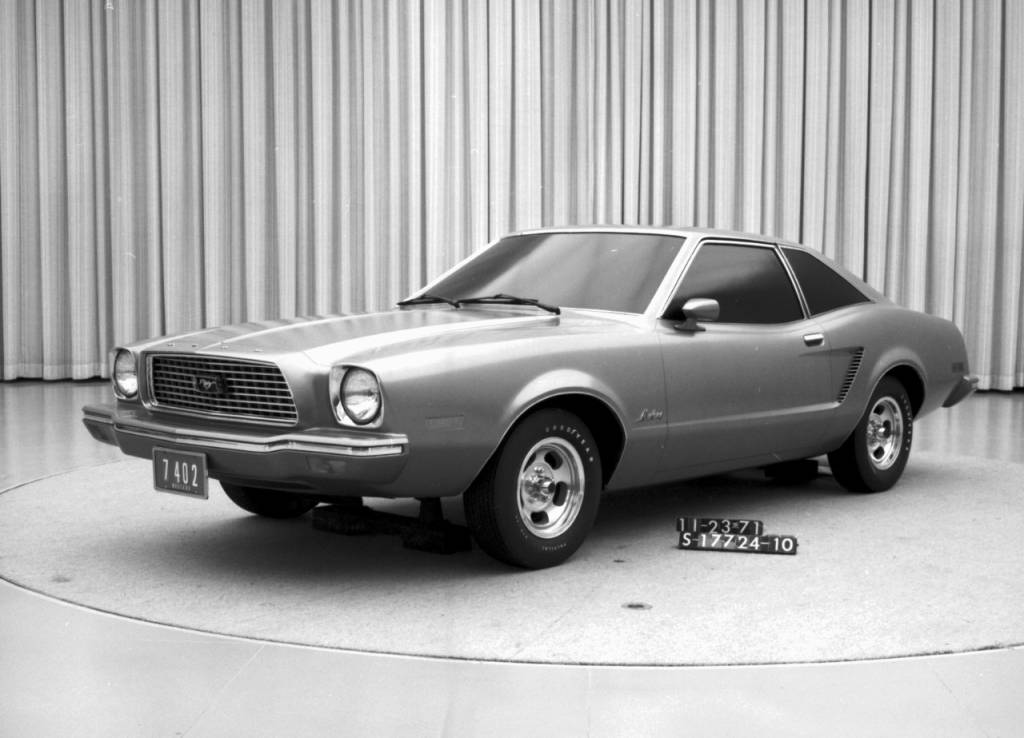
A November 1971 model with a front end almost identical to the production 1974 Mustang II. The sloping rear glass of this hardtop design eventually shifted to a more upright design. (Courtesy of Ford Motor Company)
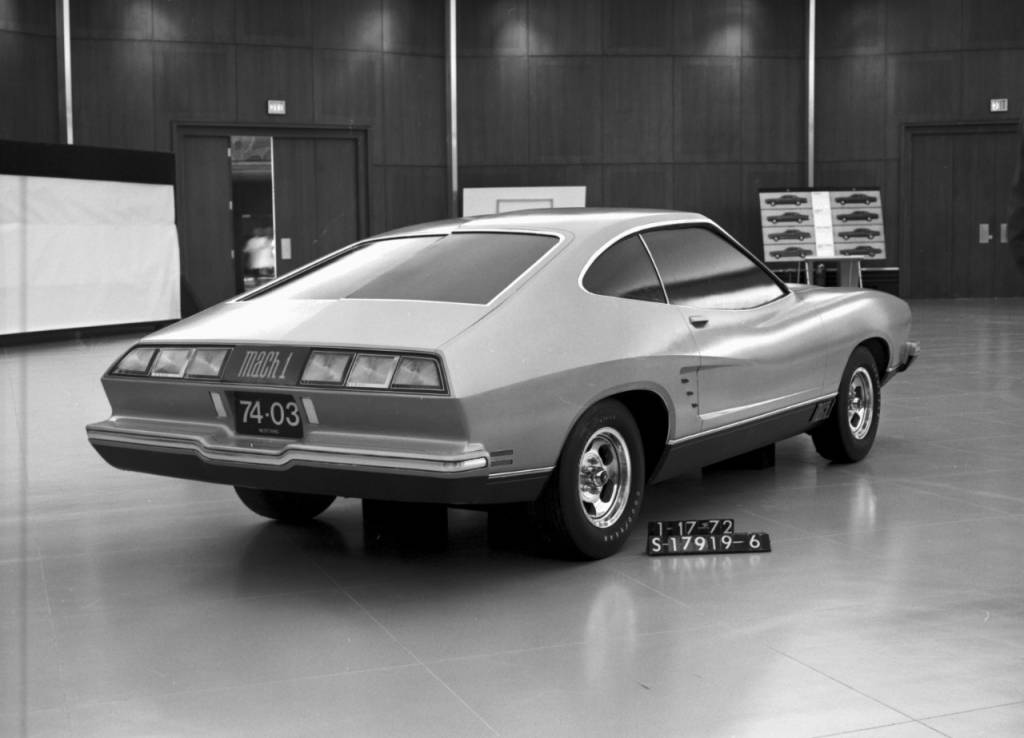
The primary differences between this model and the production Mustang II are the taillights and side scoops, which would eventually lose the strakes. (Courtesy of Ford Motor Company)
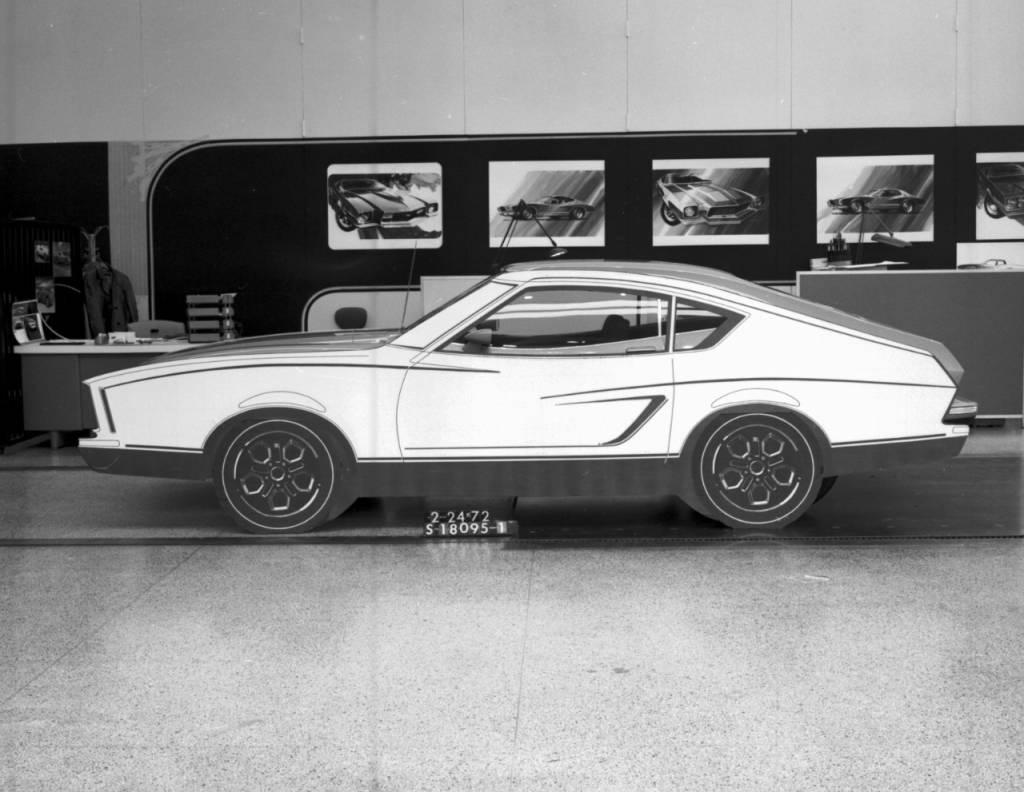
The basic profile of the hatchback Mustang II is finalized in this tape drawing, although the rear quarter windows would be expanded. (Courtesy of Ford Motor Company)
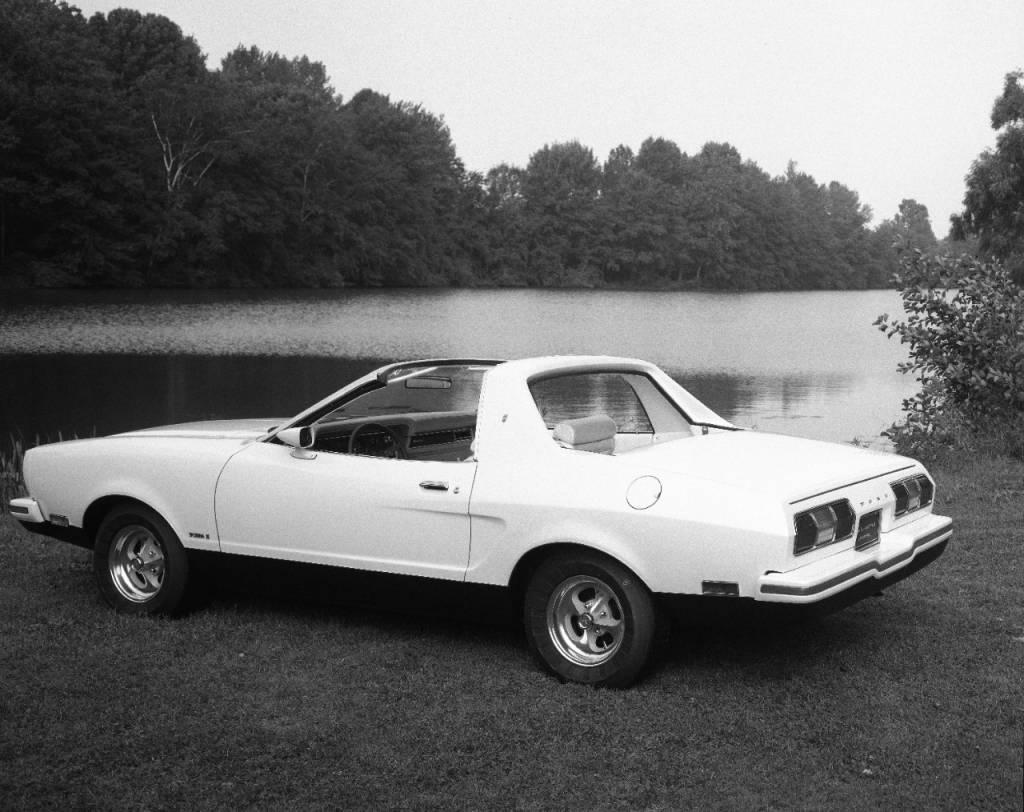
Prior to the public introduction of the 1974 Mustang II, Ford displayed a targa-roofed concept called the Mustang Sportiva II. Like the 1963 Mustang II concept, which was built from a modified prototype of the production 1965 model, the Sportiva II was derived from a preproduction 1974 model. (Courtesy of Ford Motor Company)
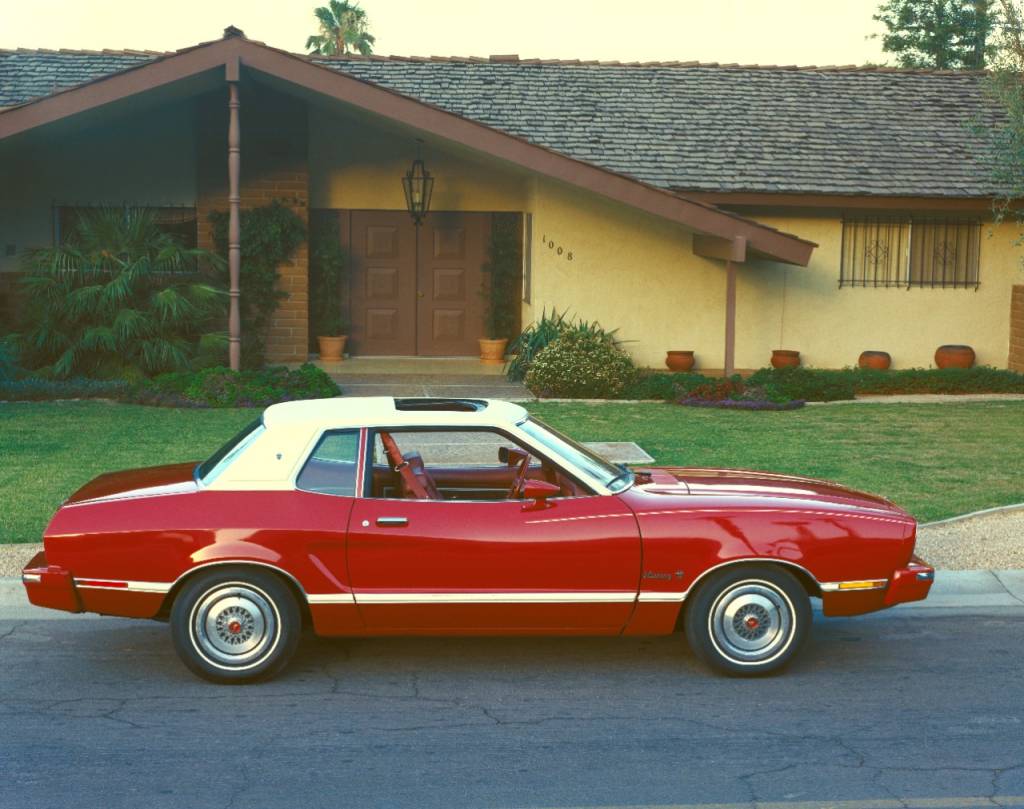
In the fall of 1973, the all-new Mustang II went on sale in hardtop and hatchback bodystyles. Initially available only with four-cylinder and V6 engines, Mustang II arrived just in time for the first big spike in gasoline prices, and helped to reverse years of declining sales, hitting nearly 300,000 units in its first model year. (Courtesy of Ford Motor Company)
This article, written by David P. Castro, was originally published on ClassicCars.com, an editorial partner of Motor Authority.
